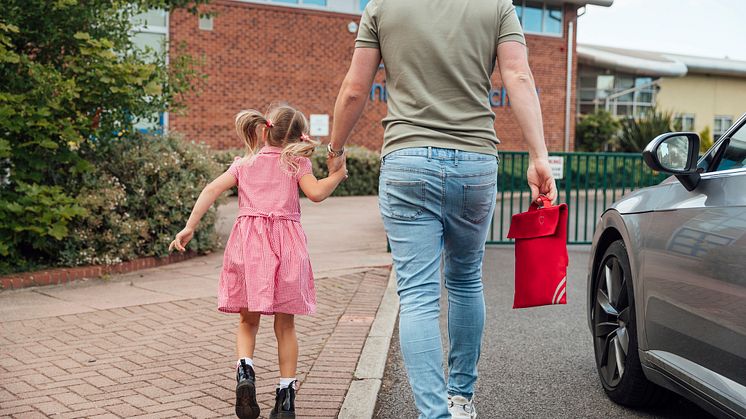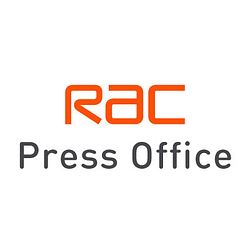
Press release -
RAC data confirms the morning rush hour has fully returned
The morning rush hour, a phenomenon last seen nearly six months ago, has returned with traffic levels back to levels seen in January, analysis of hundreds of thousands of trips taken by RAC Insurance customers has revealed.
Data from drivers with RAC black box devices fitted shows that the beginning of the school year in England has led to a marked rise in cars on the road, particularly at what appears to be the peak drop-off time of between 8am and 9am. Looking at average weekday traffic between Monday 7 September and Wednesday 16 September, between these hours there were the same number of cars being driven as on a weekday in January. Car volumes during these times were also up 55% compared to the period before most schools had returned (week beginning 24 August).
Alarmingly, the figures appear to show that the UK’s morning rush hour is caused more by people dropping children off at schools and nurseries than it is by commuters heading to places of work, given that many people are still working from home.* The fact that many schools are operating staggered drop-off times in light of the coronavirus may also be having the effect of extending the rush hour as well as changing the morning routine for some families.
At the other end of the day, car volumes are now at around the same level between the end of school ‘rush’ of 3pm and 4pm and evening ‘rush’ of between and 5pm and 6pm as was the case before the first coronavirus lockdown in March.
Daily RAC breakdown figures also show a ‘return to normal’, with mid-week call-outs in particular only a little below those seen during the first few winter months of the year. But interestingly, since the schools returned patrols have on average been called out to more rush-hour breakdowns than expected with this being balanced out by fewer later in the day.
RAC Insurance spokesperson Rod Dennis said:
“While schools reopening was always going to lead to a rise in vehicle traffic, the fact that between a fifth and a third of the UK workforce is still working remotely* shows just what role the school drop-off plays in creating the phenomenon we know as the morning ‘rush hour’.
“In short, it appears dropping off children at schools and nurseries contributes far more to morning traffic in the 8am to 9am window than commuters heading to workplaces does, which is a surprising finding in itself.
“What’s abundantly apparent is how dependent parents are on the car for getting children to their places of study or play during the week – and with fewer people prepared to take public transport at the moment, the reliance on the car as the transport mode of choice has increased. Workers that used to drop children off and then carry on to offices or other workplaces are clearly still using their cars for these trips, but just returning home again instead. It may also be the case that many are opting for the car so they can be back at their desks to start work as promptly as possible.
“The staggered ‘drop-off windows’ introduced by many schools as a result of the pandemic to cope with large movements of children may be another reason for the rise. Those that have children in more than one school or nursery might be finding themselves having to quickly get from one to another to drop off in time, making the car the favoured option.
“The million-dollar question, of course, is what happens next and whether morning road traffic continues to rise in the autumn, or whether it stays at the sort of level we’re seeing now. The rising number of coronavirus cases, together with the introduction of local lockdowns and the threat of new nationwide restrictions, may also have an impact on people’s willingness to return to public transport.
“But while there is a huge number of possible scenarios that have the potential to change our travel habits, what does appear clear is that millions of us will continue to rely on the car for completing the journeys we have to make.”
Topics
Categories
Notes to Editors
* Based on ONS surveys. The latest ‘Coronavirus and the social impacts on Great Britain’ bulletin states 20% of workforce working remotely at home, while the latest ‘Coronavirus and the economic impacts on the UK’ bulletin states 36% of the UK workforce is working remotely, while 11% remains furloughed. Links accessed 18 September 2020
The press office email address is press.enquiries@rac.co.uk. Please note: the press office is unable to help with individual customer enquiries - please visit the RAC contacts page to find the right contact.
ISDN radio studio facilities are available for interviews Monday to Friday.
About the RAC
The RAC provides complete peace of mind to 12m UK private and business drivers, whatever their motoring needs. Its services include:
- Breakdown assistance. Its highly-skilled, 1,600-strong branded patrol workforce attends more than two million breakdowns every year, fixing on average four out of five vehicles at the roadside. The RAC’s patrol fleet is one of the most advanced in the UK, and was the first to roll out both an All-Wheels-Up recovery system, allowing the vast majority of vehicles to be recovered from a single patrol van, and EV Boost mobile electric vehicle charging units
- Insurance. The RAC is a top-five car insurance broker having surpassed the 500,000 policies-in-force milestone in 2018. It also offers ‘black box’ telematics policies, as well as home and travel insurance
- Other motoring services. The RAC leads in the development of new solutions for business, fleets, electric vehicles and future car technology. Its additional products and services include a personal loans offering, a used car buying website, vehicle inspections and checks, legal services or up-to-the-minute traffic and travel information. It also has a network of Approved Dealers and Approved Garages which combine the trust of RAC brand with local service and convenience
The RAC also works to support the interests of its members and UK drivers on the most important motoring issues which it identifies via the annual RAC Report on Motoring and the RAC Opinion Panel. The Report on Motoring is the longest running analysis of driver opinion in the UK having been published every year since 1989.
For more information about the RAC, visit the RAC website.


